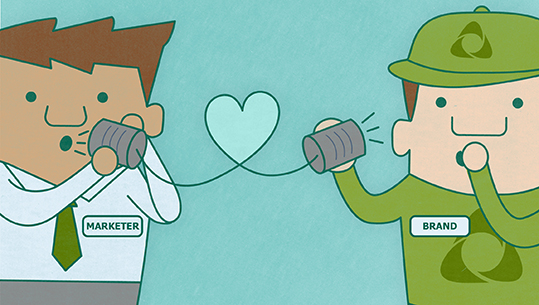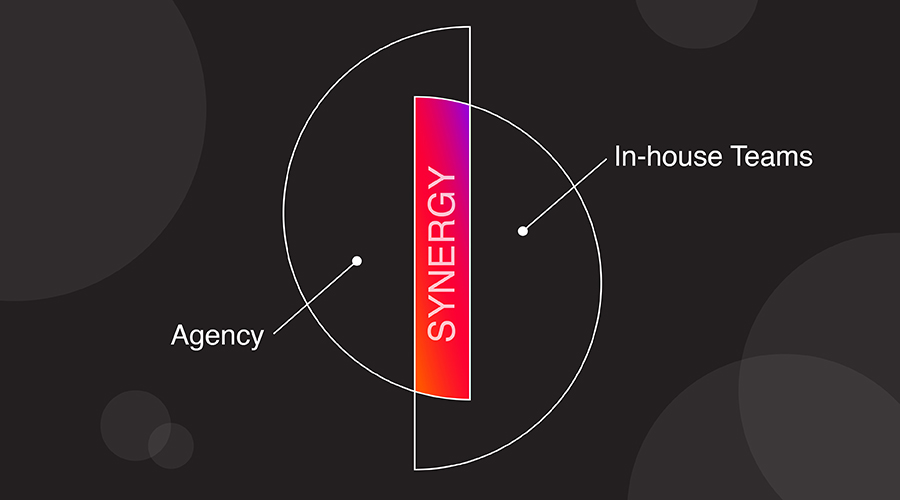You are an industry leader. You are at the top of your game. Customers clamor for your products and you notice a jealous glint in your competitor’s eye. When you walk the floor of an industry trade show, all other brands cower and dare not gaze directly at your visage.
Now, this story isn’t about what it takes to make a great brand, or how to leverage your brand or optimize your brand’s core brandiness. This story is about how to avoid getting a distorted view of your brand, no matter how successful it may currently be.
We Need to Talk
Can you be brutally honest about your brand? Do you have the fortitude to look beyond your successes today to the challenges that might lie in the future? Do you have the courage to make a major change even though you are riding high right now?
It’s easy to rest on your laurels when it comes to your brand. There’s comfort in consistency and human beings are pattern-seeking creatures – that means we are wired to search for and find things we recognize. And typically we don’t like it when those patterns change. It causes a disturbance. But even the best brands need to cause a disturbance, because oftentimes the aftermath results in better clarity and understanding.
Brand Innovation > Product Innovation
When you are the leader in your industry, you are doing something right. And companies spend an inestimable amount of time (and money) trying to replicate that “something right.” Many do it by looking backwards and trying to repeat the formula that got them there, but the smart companies – the companies that remain industry leaders – look forward. In short, they innovate.
Innovation shouldn’t just happen on the product side of the equation; it needs to happen on the brand side as well – and it’s just as critical to a company’s continued success.
Product innovation is a serious business that helps companies move forward. No one questions the importance of it. But brand innovation? Sometimes even the most steeled brand and/or marketing managers gasp and swoon, clutch their pearls and get the vapors at the thought of it. Honestly, it’s because they don’t understand it. They’re more concerned about having to reprint business cards and stationery.
But it needs to happen – and quite often the best time might be when you least expect it.
There’s a Plan for That
So, if you are riding high and are a recognized leader in your industry, how do you know if and when the time is right to make a significant change to your brand? That’s where research comes in.
Step 1: Research
You’ve heard it a million times before but that’s for a very good reason – research can reveal blind spots about your brand and very quickly crack any rose-colored glasses that might be perched on your face. It can reveal whether brand fragmentation is occurring. It can show how brand perception aligns with your leadership position. At the very least, it can unearth valuable insights into the status of your brand.
Step 2: Strategize
Now that you know the status of your brand, where do you go from here? Planning and strategizing is key – what did the information tell you and what actions should you take? How quickly should you take action? Is the situation dire? Is your brand not as strong as you think? Are you missing something critical in the marketplace? Is the sky falling?!?!?! These are the types of questions you need to start with. And you have to give them serious thought and consideration.
Planning without research is a grossly inefficient problem that can cost any brand a lot of time and money. It’s the equivalent of trying to solve a problem without knowing what’s causing it. So don’t sell it short.
Step 3: Create
Armed with a definitive strategic direction based on solid research and analysis, you are ready to move into the Create Phase, aka the Fun Phase. This is where talented designers and writers come together to develop the next generation of your brand and – most importantly – what its message will be.
Even though most steadfast and solid brands need to be updated to stay valid in a marketplace that’s moving at hyper-speed compared to just 10 years ago. “Market truths” have changed as much as the markets and media themselves. Remaining true to your core, while adapting to meet the changing demands and needs of your customers is the balance you have to strike.
Step 4: Measure and Optimize
The days of setting a new campaign adrift on the consumer sea and seeing what way the market winds blow are long gone. Measuring and optimization can happen on almost a weekly – if not daily – basis depending on your industry and purchasing dynamic. Digital media strategies should be designed to be “elastic” – expanding and contracting as needed.
This allows you to put more effort into those tactics that are performing better, while avoiding those that aren’t delivering the needed metrics. This is an ongoing process that really requires vigilance from an analytics standpoint. And it can also help inform additional brand and marketing activities.
Remember though, measuring and optimizing campaigns is an invest and requires its own budget. Allocating money will not only allow you to invest in a measurement strategy, but also allow you the flexibility to make changes to your campaign based on results.
So, when is the right time to have a heart-to-heart chat with your brand?
Well, when was the last time you had a serious look at you brand? A real serious look? Be honest. It’s been a long time, hasn’t it? Don’t you think now is a good time? Your brand will definitely appreciate it.





